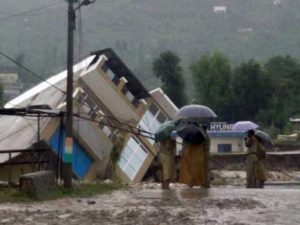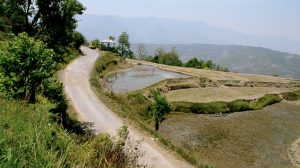The crucial links between water and energy supplies could become a flashpoint in the future but are poorly understood, particularly in China, warned experts gathered at this year’s Stockholm World Water Week.
Growing energy demand is driving water consumption globally. By 2035 energy consumption will increase by 35%, pushing up water consumption by 85%.
“Projections show that the demand for water will increase drastically over the next few decades, and energy production will be one of the main uses of the resource,” said Torgny Holmgren, head of the Stockholm International Water Institute, which is organising this week’s event.
Water and energy supplies are intimately linked. Water shortages quickly create energy crises and vice versa. In China, for example. extreme drought led to a major power shortfall in the Yangtze basin and forced more than 1,000 dams to suspend operations in 2011.
But the links between water and energy run far deeper. Water is needed to produce almost all kinds of energy and energy is used to extract, clean and distribute water.
The confrontations between energy and water are particularly stark in China, where the water footprint of energy development and the energy footprint of water are large and growing.
Water drives the economy and dwindling supplies threaten the country’s energy production and economic growth. China’s reliance on water-intensive coal is well known: 70% of the country’s coal plants are situated in arid north and almost half of these plants are already threatened by water shortages.
Alternatives to coal, such as natural gas, nuclear and hydropower are also constrained by water availability. Nuclear power plants use an enormous amount of water for cooling. In almost all of China’s promising shale gas areas –such as the Tarim basin in the northwest – water supplies are limited. Even solar power – where China is the world’s leading market and producer – uses water for the manufacturing of parts and cleaning panels.
Less well known is the rapidly expanding energy footprint of the water sector. Mega-diversion projects to expand water supply like the South-North Water Transfer Project (SNWTP), or the proposed Bo Hai sea water pipeline, drive up the energy costs of providing water. To pump water along the eastern stretch of the SNWTP will require the conversion of millions of tonnes of coal per year into electricity to move the water and, creating further water stress.
Desalination is another water-energy crunch point. China is ramping up its desalination capacity from 600,000 tonnes a day to 2.5 to 3 million tonnes a day by 2020, which requires about 10 times more energy per unit of water than other treatment methods. On China’s east coast, desalination plants are being developed to provide water to coal plants in water-scarce areas, which will in turn support further growth in coal-power.
Then there are the investments needed in water and energy in urban areas over the next 20 years as authorities move ahead with plans to push another 270 million people into urban areas by 2020.
Few countries have prioritised data collection and policies to deal with the growing confrontations between water and energy. Calculating the water footprint of energy development (the total amount of water used to produce energy) and the energy footprint of the water sector can help policymakers understand the interdependencies and trade-offs between these resources, argued Alexandra Freitas, from the Netherlands based Water footprint Network.
The idea of energy and water footprints is a powerful tool,” agreed Deepak Gyawali, former Nepali Minister of Water and Energy. “If it’s taken up by NGOs and activists it has the real potential to drive change. Otherwise no one is listening."








